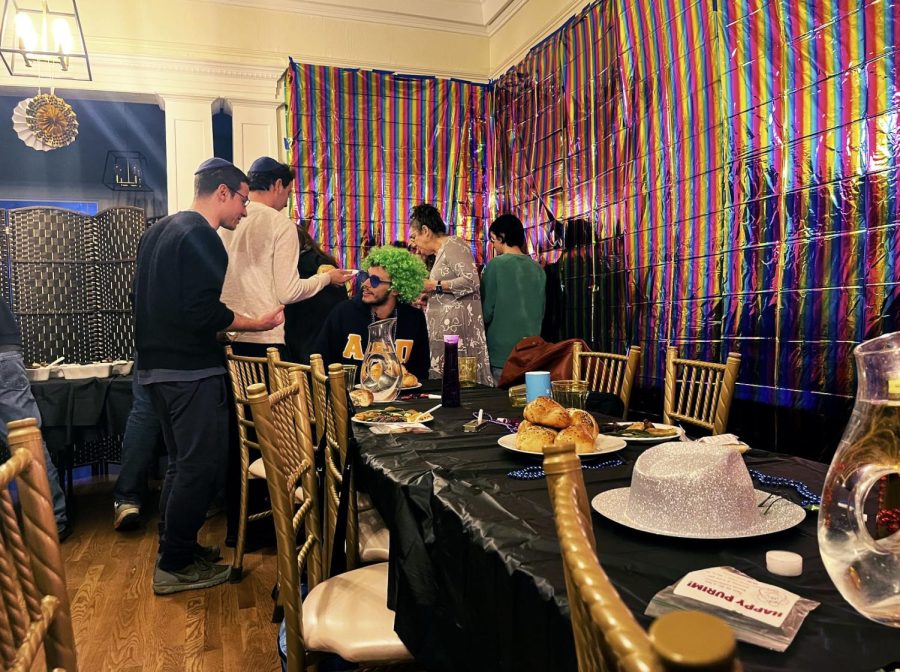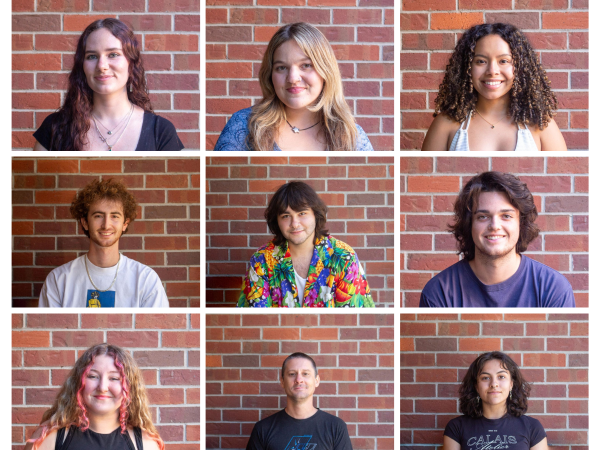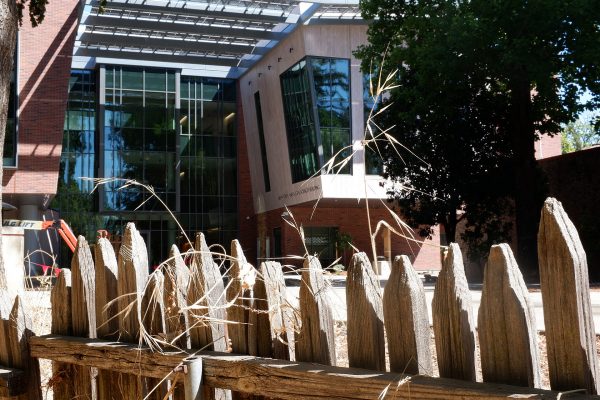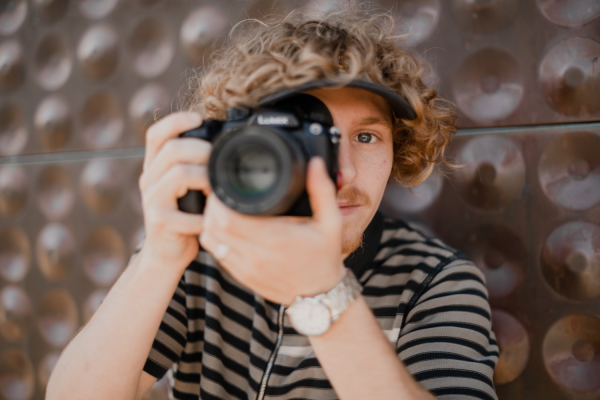Purim: Celebrating Queen Esther, a savior of Jewish community in 4th century BCE
Tables vibrated and the air buzzed as hands and feet fell on flat surfaces with a bang and graggers rapidly ticked through the atmosphere. The walls dressed in pink, blue and yellow foil reflected an atmosphere thick with joy, laughter and a sense of community.
Purim, a festive Jewish holiday rich with meaning and depth, was in full swing at the Chabad House on the corner of West Fourth Street and Chestnut. Tuesday evening began with a reading of the story of Purim from the Megillah, or the Book of Esther.
Esther became the queen of the Persian Empire in fourth century BCE after marrying King Ahasuerus. When she married Ahasuerus she refused to reveal that she was Jewish until the prime minister — and advisor to the king — Haman, had convinced him to release a decree ordering the Jewish people be killed on a day chosen by a lottery that Haman made.
Upon learning this, she invited the king and Haman to a feast where she then revealed that she was Jewish. After learning this, King Ahasuerus saw that Haman was hanged, and Mordechai, Esther’s cousin and leader of the Jewish community, was appointed as the new prime minister.
Rebbetzin Chana Zwiebel said the story of Purim is read not only to remember what happened, but to also re-internalize the lessons gleaned from the history.
Providing donations to the poor and giving food to others are two other traditions inherent to Purim. A plastic white-and-cyan donation jar went around the U-shaped table for those who had coins or cash. For those who didn’t, a small group of pennies traveled alongside the jar so that everyone could participate.
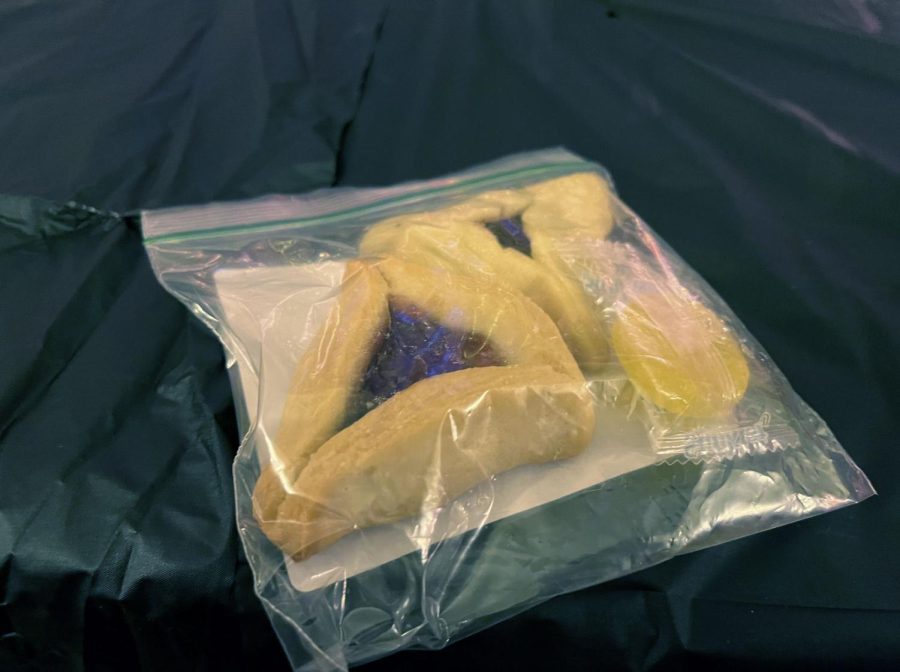
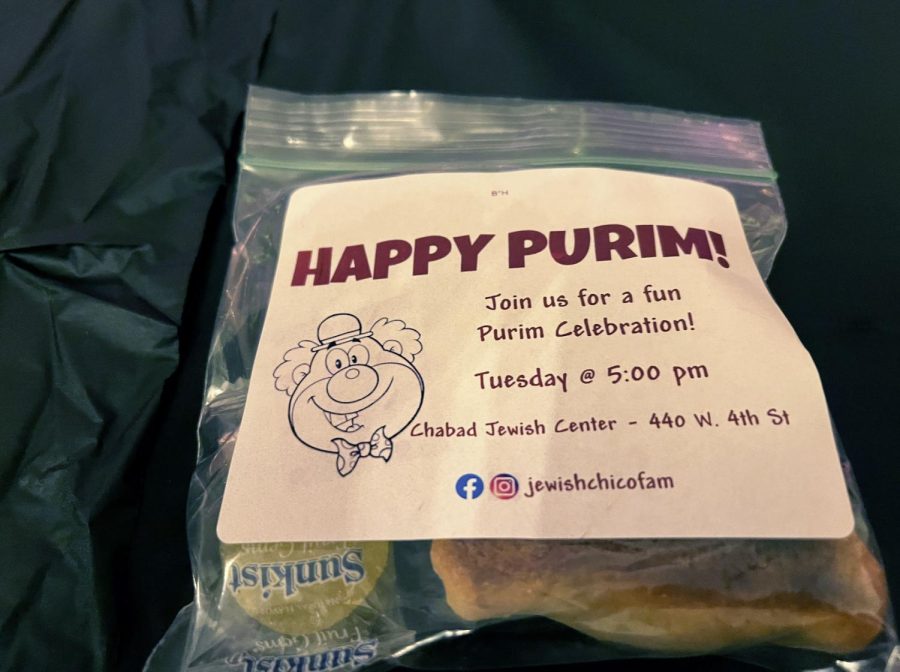
Small plastic bags with two hamantaschen and a Sunkist fruit gem were passed out and people were grouped up so that everyone could exchange the food amongst each other according to tradition.
Hamantaschen are a type of cookie or pastry made out of dough and any type of filling, including fruit or chocolate.
“It’s [hamantaschen] where the miracle is concealed,” Rabbi Zwiebel said. “The three corners represent the three fathers of the Jewish community: Abraham, Jacob and Issac.”
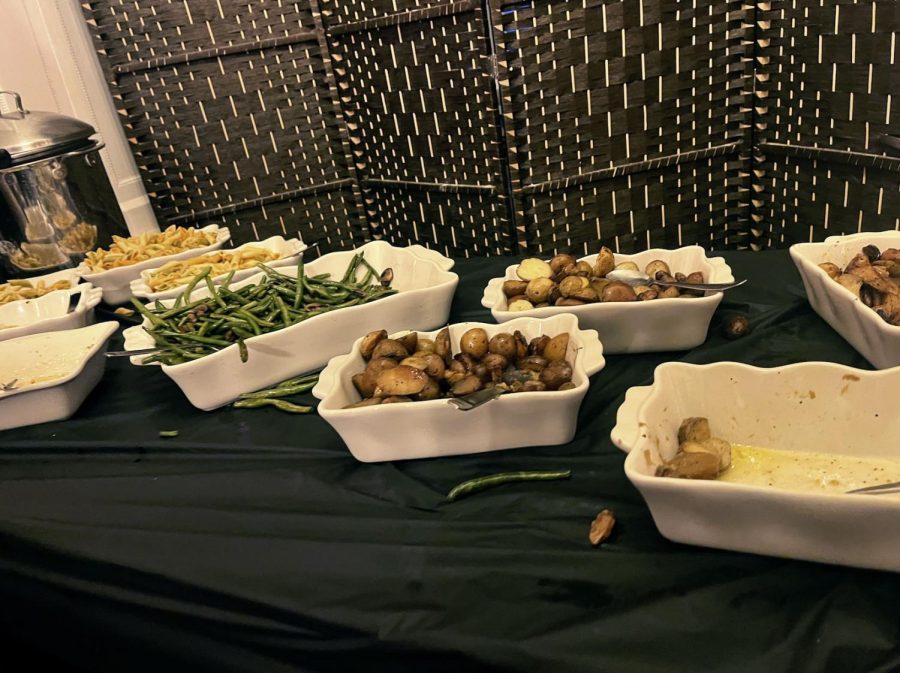
White bowls of hamantaschen were passed around after dinner, which featured green beans, eggrolls, protein, cooked potatoes and other warm, savory dishes, and were used as part of some games played during the celebration. Zwiebel split the room into two teams, team Mordechai and team Esther. Multiple races occurred, including wine bottle-opening, tallying how many languages each team could say “Hello” in, and the cookie challenge, featuring hamantaschen.
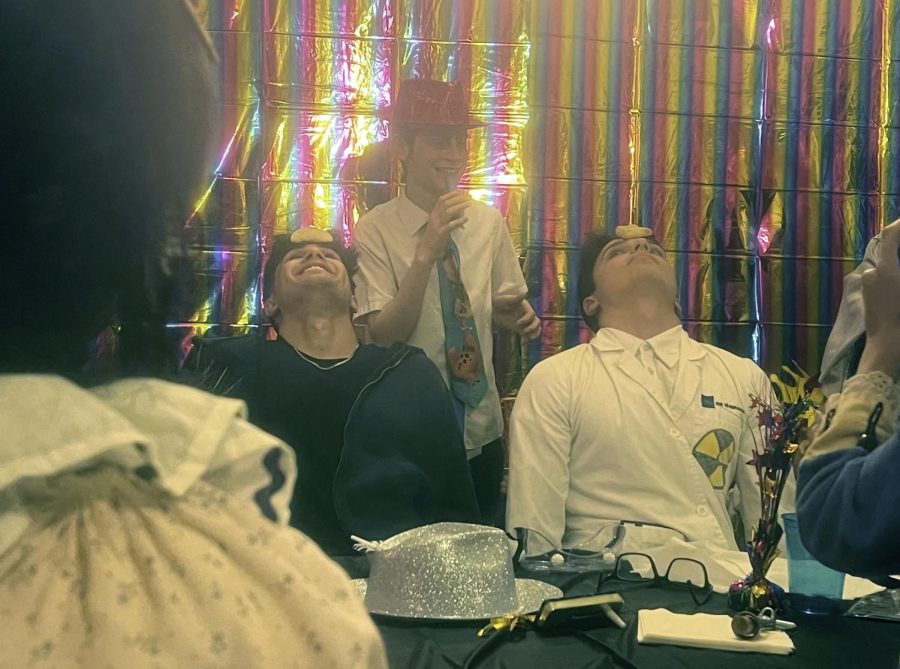
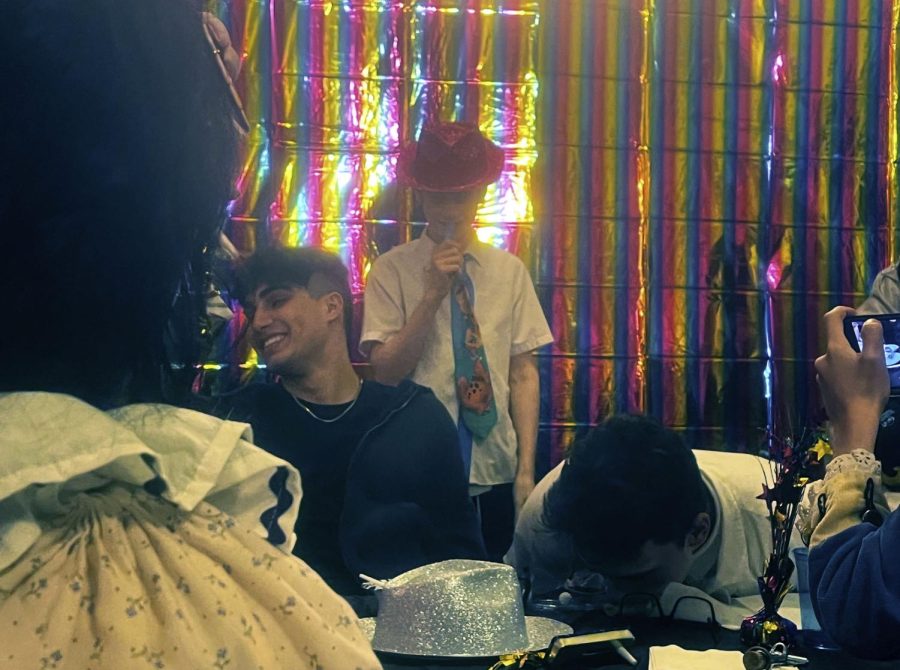
A sense of community was prevalent throughout the night as laughter was heard throughout the house. However, for the community as a whole, not many know about Purim.
“I would say Purim is probably one of the least known holidays, even within the Jewish community,” Zwiebl said. “It really is actually a very significant day and a very holy day. But it probably is the least known for sure.”
Bryce Goldstein, a Chico resident who did not celebrate Purim at Chabad House, but instead with friends at sundown on Monday, did not grow up celebrating the holiday. It has only been within the past three years that she has taken part in some Purim traditions.
“I definitely don’t believe in or follow a lot of Judaic traditions, but I enjoy learning about my culture and celebrating the parts that should be celebrated,” Goldstein said. “For Purim and most holidays, this includes celebrating with food and friends.”
Goldstein dressed as Queen Esther in a “nice, sexy outfit.” Wearing costumes is another Purim tradition. Clowns, queens, explorers and scientists were a sight to see at the Chabad House on Tuesday.
“Personally, the overall importance of Purim is to celebrate the ongoing survival of the Jewish people while having fun and sharing food with my friends,” Goldstein said.
Goldstein is extra excited to celebrate being Jewish as a way to oppose local fascists.
Zwiebel said she believes that due to social media, hopefully, there is more exposure, awareness and understanding regarding Purim than five or ten years ago.
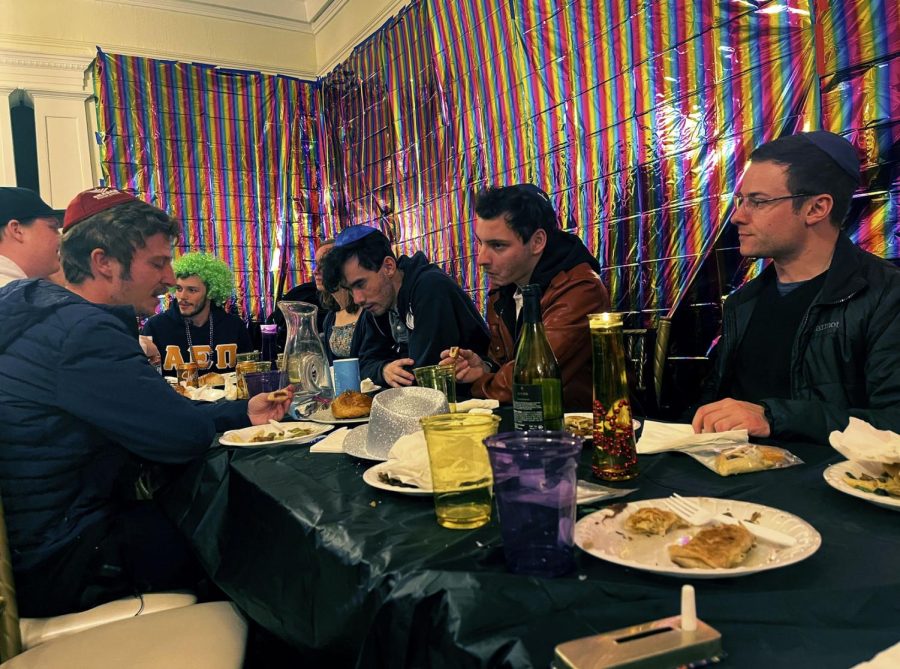
“I do think it’s [social media] a good place for people to learn, but I also think that people need to be responsible,” Zwiebel said. “I do try to post things that are like educational and fun.”
Chabad House’s social media presence, such as on Instagram, provides sufficient coverage of information regarding holidays, events and, above all else, shows the community present at the house.
“We are a Jewish center, but we really try to be a home away from home; really a place where anyone can come to celebrate, explore, ask about Judaism or about anything,” Zwiebel said. “We are just a family where we welcome everyone.”
Ariana Powell can be reached at [email protected].



